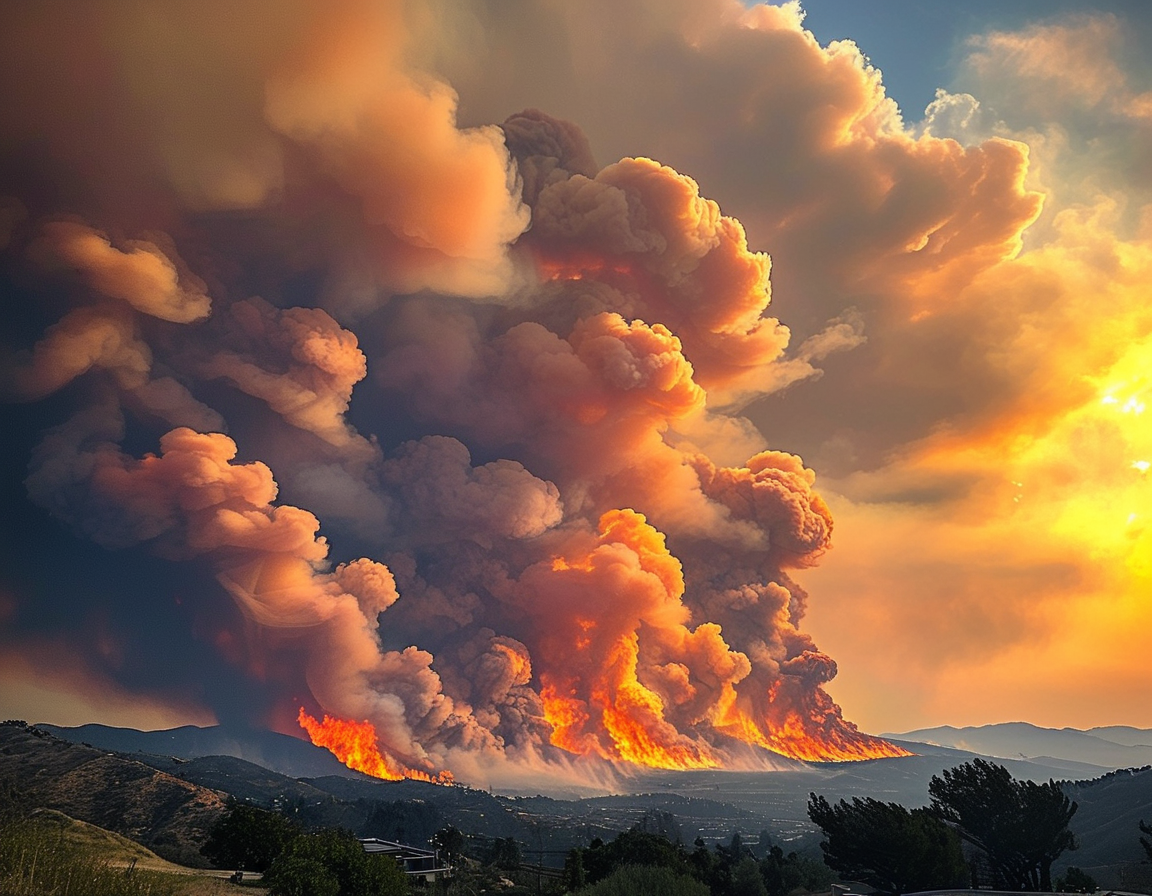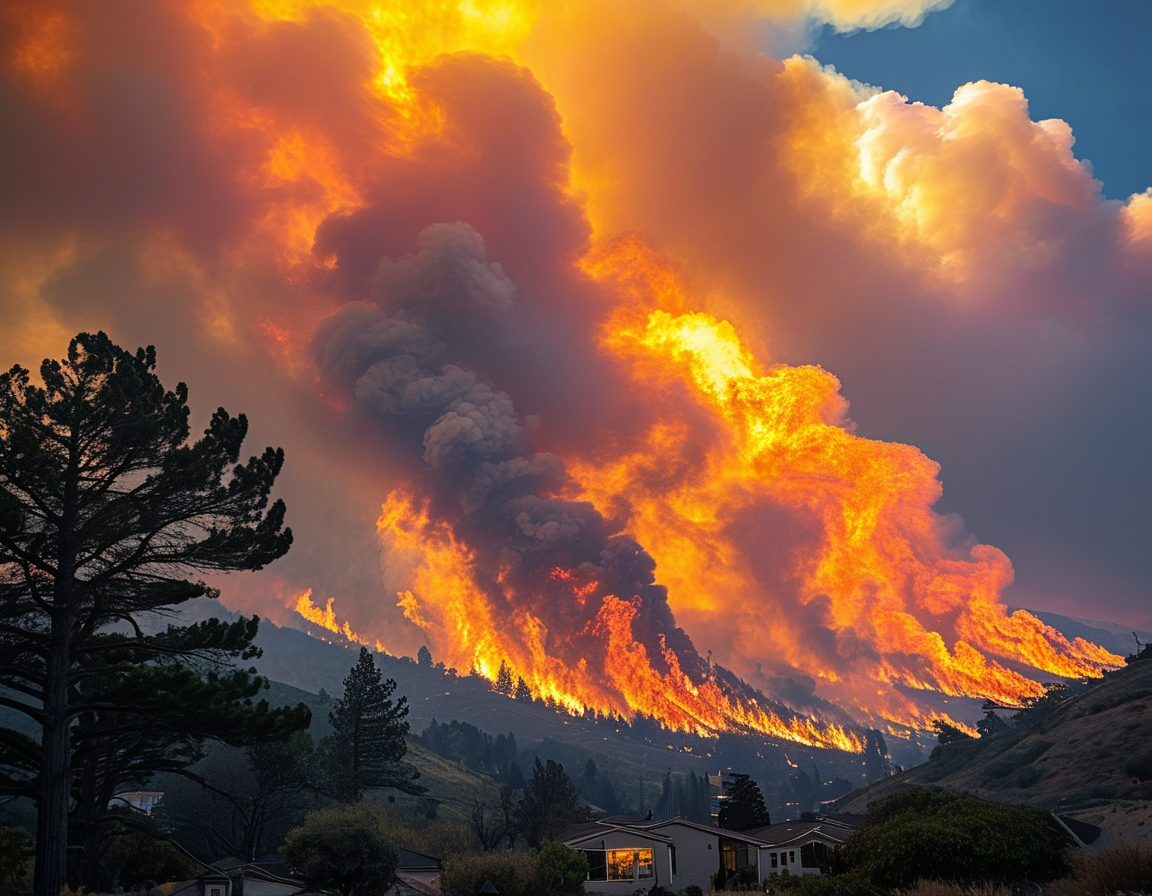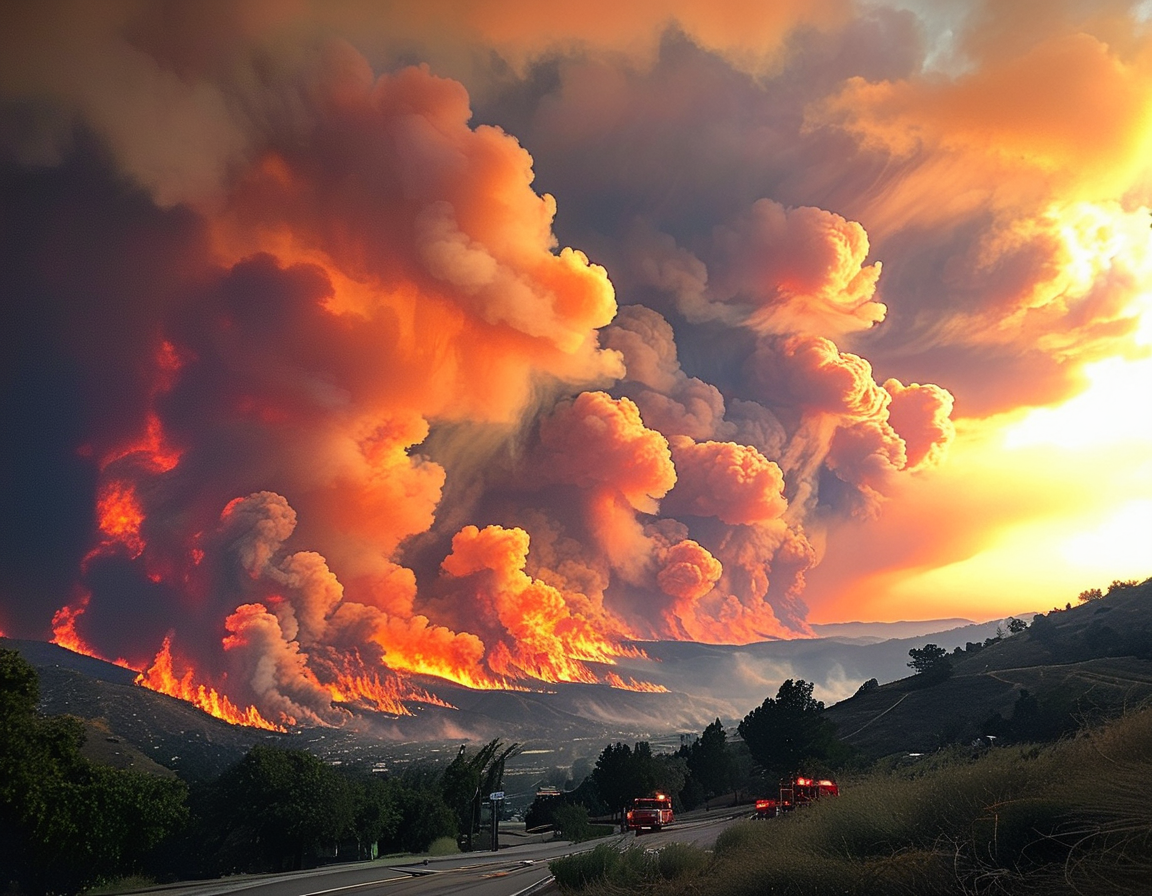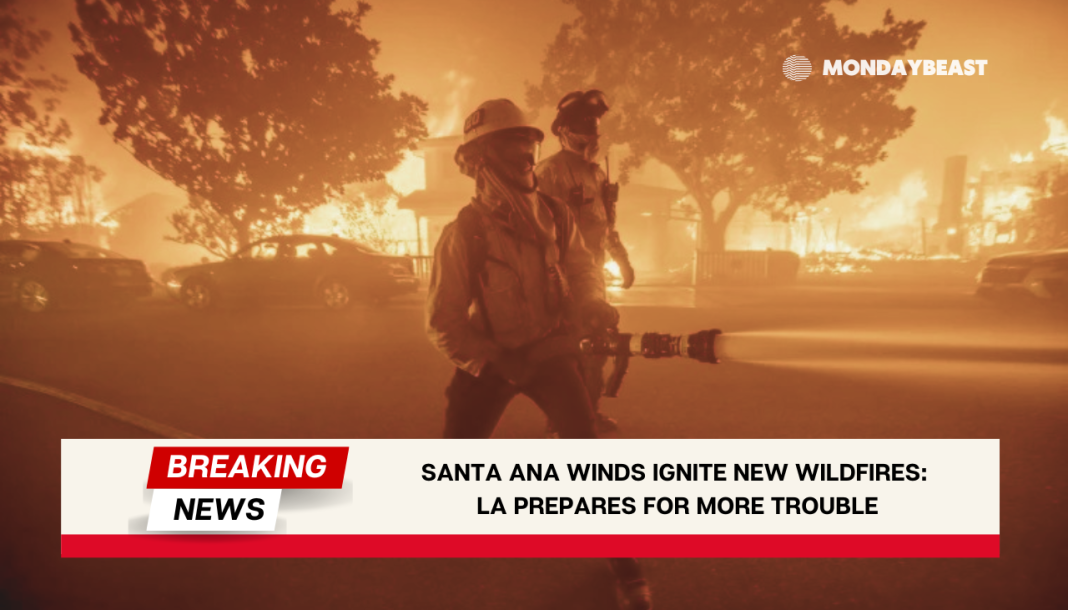Lauded as a land of sun and surf, Southern California is facing a stark reality. The Santa Ana winds, those fierce gusts that sweep through the region, are causing new wildfire outbreaks. Today, many wonder: Are we prepared for what’s to come?
The winds have shown their might. Reports detail hurricane-force gusts exceeding 74 mph. Sill Hill recorded a staggering 102 mph. These gusts endanger the progress made against existing wildfires that have already laid waste to over 40,000 acres and resulted in 28 tragic deaths.

Firefighters, those brave souls on the frontlines, have been battling tirelessly. The Lilac Fire is one alarming hotspot. It currently spans 80 acres, with just 10% contained. Authorities are also monitoring the Pala Fire, which grew to 17 acres but was fortunately stopped in time. Evacuation orders were lifted, offering a momentary sigh of relief.
Yet, hope is mingled with concern. Just this past Monday, a wildfire threatened the iconic Griffith Observatory. Fortunately, swift action by firefighters prevented any damage. Just blocks away, the Granada Hills and Tujunga neighborhoods also faced small fires but saw no destruction to homes. ‘It could have been much worse,’ said LAFD Chief Kristin Crowley. But how long can this pattern of near-misses last?
While the winds may finally calm, danger lingers. The Los Angeles Fire Department has mobilized all available resources. Fire engines and patrols are strategically positioned in vulnerable areas. What does this constant state of alert feel like for residents? For many, it’s a haunting cycle of stress.

The air quality itself adds another layer of complexity. A dust and ash advisory is in place, raising significant health concerns. Particles from the winds mix with existing fire remnants. Those living in the area might wonder: Are we safe to breathe?
Amid this chaos, there’s also a flicker of hope. Forecasts hint at incoming rain later this weekend. Consider this: while any moisture is welcomed, it also poses risks. The contaminated ash left from the wildfires could wash into waterways, creating another looming threat.
‘I normally pray for rain,’ shared City Councilmember Traci Park. Yet, she isn’t rushing into those prayers lightly. ‘The burn scars could lead to mudslides. It’s a double-edged sword.’ The city is gearing up to mitigate debris flow from potential rain. Local leaders are keenly aware of the complexities.

Ceramics dust, engineered metal, and ash might make their way to our beaches. The Los Angeles County Department of Public Health has raised alarms. Residents are warned against ocean contact at several beaches. Is this truly what it means to live in a paradise plagued by wildfires?
As gusts push through, an undercurrent of anxiety prevails. San Diego County is still wrestling with fires licking at its edges. Officials have pre-deployed fire crews, trying to stay one step ahead. The heartbreaking reality is that each new blaze brings with it not just the threat of destruction but forces communities apart.
Assistant Chief Dominic Choi of the LAPD highlighted ongoing efforts to assist affected residents. The extensive search for missing persons has wrapped up in the Palisades Fire burn area. Yet, sustainable solutions remain paramount. As individuals navigate these challenges, rays of community support become increasingly vital.
In conclusion, Southern California is at a crossroads. As nature unleashes powerful winds and fiery mayhem, we must ask ourselves tough questions. How can we best protect our communities? Are we prepared to tackle the dual threats of fire and contaminated water? Perhaps it’s time to unite efforts, commend the firefighters, and prepare meaningful responses to these recurrent challenges. The choice is ours.




